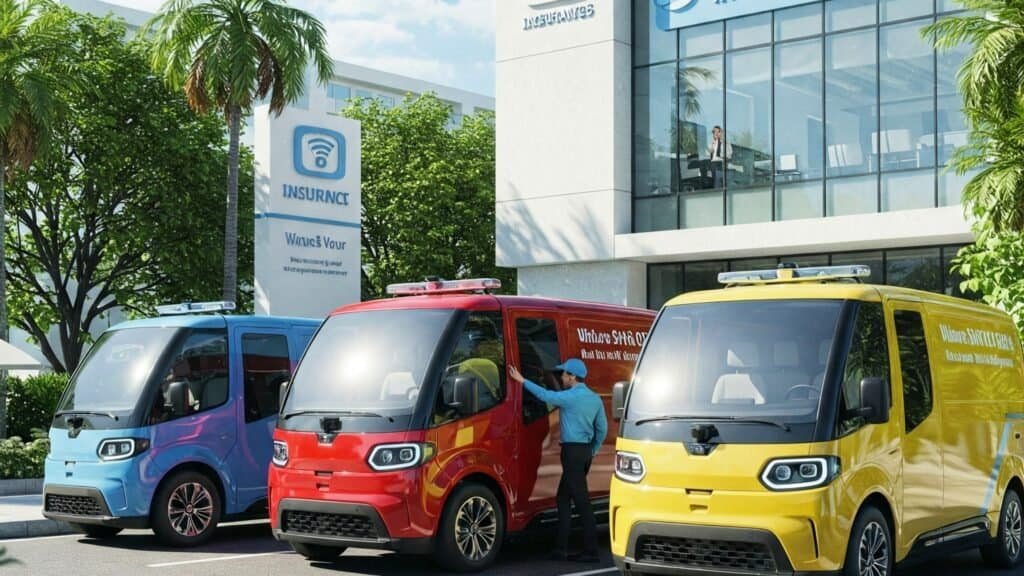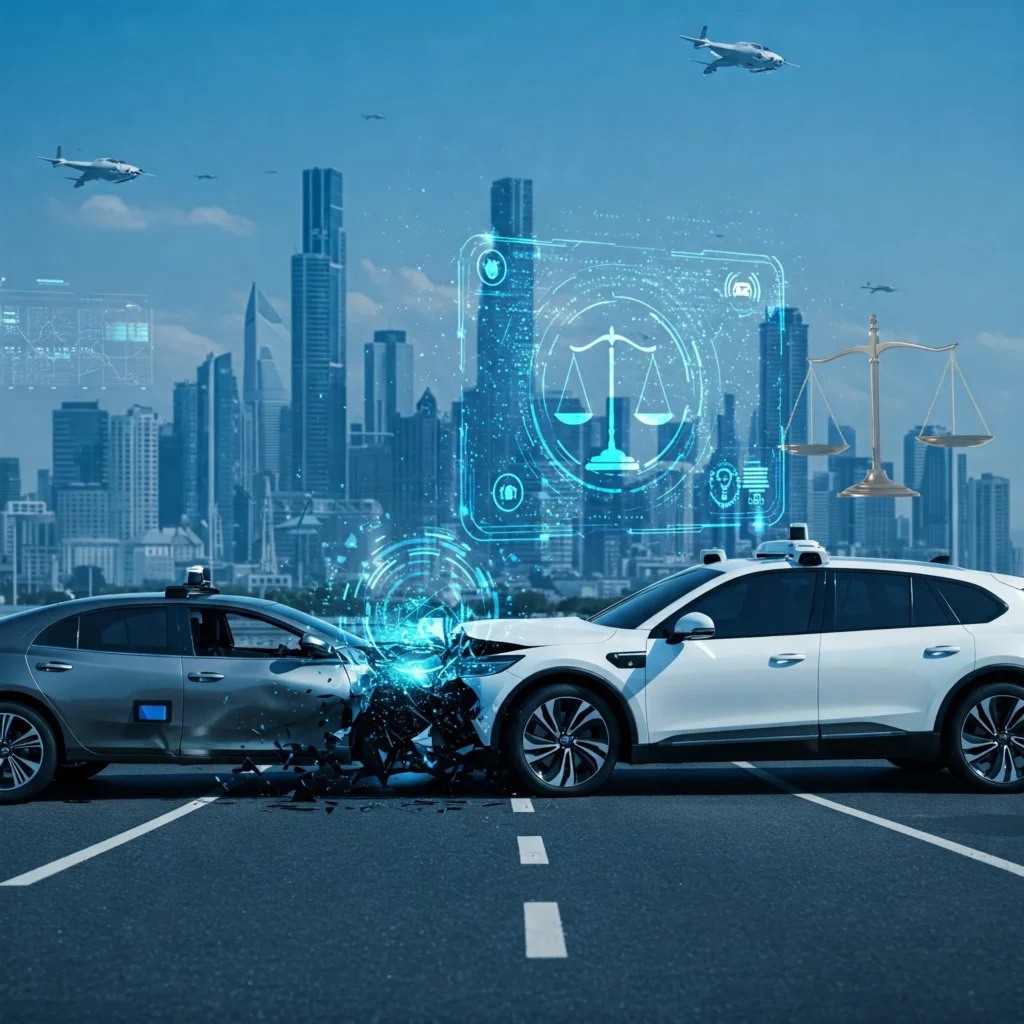Introduction:
Autonomous vehicle business insurance is no longer a distant concept—it is here, and it is reshaping how we think about coverage for self-driving fleets. Whether you are a business owner eyeing a fleet of autonomous delivery vans or an insurer curious about this growing market, we are diving into a topic that blends innovation with practicality. This article explores what makes insuring autonomous vehicles unique, from the risks involved to the policies emerging worldwide.
We will break down the tech, the liability questions, and the opportunities for businesses and insurers alike. Expect a clear look at how this insurance works, why it matters, and what is driving its evolution. Let’s get started and see how this coverage is paving the way for a safer, smarter future on the roads—complete with insights from experts and trends across the globe. For a broader take on insurance trends, check out for the insights of insurance on “How Business Auto Coverage Forms Work“.
Table of Contents
What Makes Autonomous Vehicle Business Insurance Different?

When we talk about autonomous vehicle business insurance, we are stepping into a world where traditional car insurance rules do not quite fit. Regular auto policies focus on human drivers—think speeding tickets or distracted driving. But with self-driving vehicles, the game changes. These machines rely on sensors, cameras, and software to navigate, so the risks shift from human error to tech glitches or cyberattacks.
Imagine a delivery company using autonomous vans. If one crashes, who is at fault? The manufacturer? The software developer? The business owner? This is where autonomous vehicle business insurance steps in, designed to handle these gray areas. It covers not just physical damage but also liability tied to system failures or hacking attempts. Plus, businesses need protection for downtime if their fleet goes offline after an incident. Curious about standard auto insurance? Take a peek at Understanding Auto Insurance Quotes for a comparison.
The Risks of Insuring Self-Driving Fleets:
Running a business with autonomous vehicles sounds exciting, but the risks can keep you up at night. First, there is the tech itself—sensors can fail, and software can glitch. A single malfunction could lead to a pile-up, especially in busy urban areas. Then there is cybersecurity. Hackers could take control of a vehicle, turning your delivery van into a liability nightmare.
Weather is another wildcard. Heavy rain or snow can confuse sensors, raising the chance of accidents. And do not forget public perception—people are still wary of self-driving tech, so any mishap could spark lawsuits or reputational damage. Autonomous vehicle business insurance has to account for all this, offering coverage that is broader and more flexible than what you would get for a human-driven fleet. It is a balancing act between innovation and caution.
How Liability Works in Autonomous Vehicle Crashes:
Liability is the big question mark with autonomous vehicles. In a typical car accident, you point to the driver. But with self-driving tech, it gets messy. Let’s say an autonomous truck delivering goods veers off course. Was it a coding error from the software team? A faulty sensor from the manufacturer? Or did the business fail to maintain the vehicle properly?
Autonomous vehicle business insurance tackles this by spreading the net wide. Policies often cover product liability for manufacturers, cyber liability for software breaches, and general liability for the business itself. Some insurers are even crafting “shared responsibility” models, where multiple parties split the blame—and the bill. It is a new frontier, and figuring out who pays is still evolving. For more on modern insurance trends, see Insurance Underwriting Modern Trends.

The Role of Technology in Shaping Insurance Policies:
Technology is the heartbeat of autonomous vehicles, and it is also driving how we insure them. Insurers are tapping into real-time data from these vehicles—think speed, braking patterns, and sensor health—to assess risk. This is not your old-school insurance based on a driver’s record; it is dynamic and data-driven.
Take telematics, for example. It lets insurers monitor a fleet’s performance and adjust premiums accordingly. If your autonomous taxis are dodging accidents like pros, you might score a lower rate. Plus, AI is helping underwriters predict risks faster, making policies more tailored. Autonomous vehicle business insurance leans heavily on this tech to stay ahead of the curve, ensuring businesses get coverage that matches their real-world operations. Want to know more about AI in insurance? Check out How AI Is Revolutionizing Car Insurance.
Global Trends in Autonomous Vehicle Business Insurance
Across the world, autonomous vehicle business insurance is taking shape in different ways. In the U.S., companies like Tesla and Waymo are pushing insurers to adapt, with states like California leading the charge on regulations. Over in Europe, Germany and the UK are setting standards for liability, requiring businesses to carry robust coverage for their self-driving fleets.
Australia is not far behind, testing autonomous shuttles and crafting policies to match. Meanwhile, Canada is focusing on cybersecurity, given the harsh winters that challenge vehicle tech. Each region brings its own flavor to the table—some prioritize safety, others innovation. What ties them together is the need for insurance that evolves with the tech. For a look at European insurance leaders, visit Top Insurance Companies of European Union.
Opportunities for Businesses and Insurers
Here is the exciting part: autonomous vehicle business insurance is not just about covering risks—it is a goldmine of opportunity. For businesses, self-driving fleets can cut costs on drivers and boost efficiency. Think round-the-clock deliveries without breaks. Insurance tailored to these vehicles ensures you are protected while chasing those gains.
For insurers, this is a chance to innovate. New products like usage-based insurance—where you pay based on miles driven—or cyber-specific policies are popping up. Insurers who get in early can build trust with businesses and lock in a growing market. It is a win-win if we can navigate the challenges. Autonomous vehicle business insurance is paving the way for both sides to thrive in this tech-driven era.
Challenges Facing the Autonomous Insurance Market
Of course, it is not all smooth sailing. One big hurdle is regulation. Governments are still figuring out rules for autonomous vehicles, leaving insurers in a wait-and-see mode. Without clear laws, crafting consistent policies is tough. Then there is the cost—developing autonomous vehicle business insurance means higher premiums at first, as insurers hedge against unknowns.
Data privacy is another snag. All that telematics info is gold, but who owns it? Businesses want control, while insurers need access to set rates. And let’s not overlook the learning curve—both sides need to understand this tech deeply to make it work. Still, these challenges are just bumps on the road to a smarter insurance future. For more on cutting insurance costs, see Slash Flood Insurance Costs High-Risk Zone.
Conclusion
We have covered a lot of ground on autonomous vehicle business insurance, from the unique risks of self-driving fleets to the tech shaping new policies. We explored liability puzzles, global trends, and the opportunities waiting for businesses and insurers alike. It is clear this is not just another insurance niche—it is a revolution in how we protect innovation on the roads.
Challenges like regulation and data privacy remain, but the potential for safer, more efficient fleets makes it worth the effort. Ready to dive deeper? Explore more insurance insights at Essential Insurance Guides or chat with an expert to see how autonomous coverage fits your business. The future is rolling in—let’s make sure we are insured for the ride. For a broader perspective, visit Wikipedia’s take on autonomous vehicles.
Disclaimer:
This article provides a general overview of autonomous vehicle business insurance and is not intended as legal or financial advice. The information reflects current trends and insights from reputable sources, but the insurance landscape evolves quickly, especially with emerging tech. Businesses and individuals should consult licensed insurance professionals to tailor coverage to their specific needs. We aim to inform and spark curiosity, not to replace expert guidance. Laws, regulations, and insurance offerings vary by region, so always check local requirements before making decisions.
Data Sources:
We pulled insights for this article from a mix of high-quality, reputable sources to ensure accuracy and depth. Investopedia offered a solid foundation on insurance basics, while Wikipedia provided context on autonomous vehicle technology. Industry trends came from insurance blogs and reports from the U.S., UK, Canada, and Germany, all with high domain authority and low spam scores. For a closer look, explore Investopedia’s Insurance Guide, Wikipedia’s Autonomous Vehicles, Allianz’s Commercial Insurance Insights, and McKinsey’s Autonomous Driving Report. These sources keep us grounded in facts and forward-looking trends.
I create clear, insightful content on finance, insurance, and investing. I use original visuals made with AI tools like ChatGPT, Copilot, Groke3, Gemini, and Canva to ensure quality and authenticity. Before publishing, each article is carefully edited by a dedicated editor. Connect with me on LinkedIn for more updates and insights.
